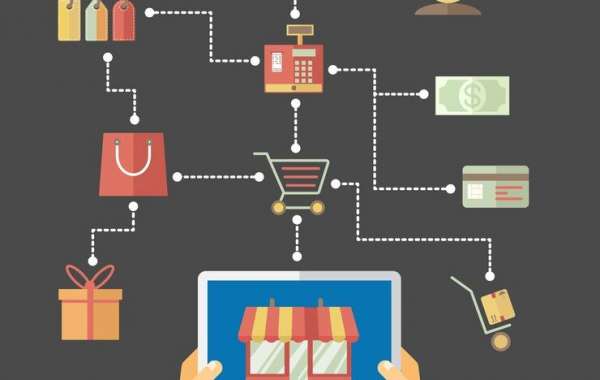Understanding the Importance of a Shopify Sitemap
A sitemap is a crucial tool for any online store, and Shopify is no exception. It is an XML file that contains all the important URLs of your site, helping search engines understand its structure and improving SEO. For Shopify stores, a sitemap provides search engines like Google and Bing with a roadmap of your website, allowing them to crawl and index your pages more efficiently.
Having an updated and optimized sitemap can significantly enhance your store’s visibility and performance, ensuring your products and collections reach your target audience. Here are five essential tips to ensure your Shopify sitemap works efficiently for you.
Keep Your Sitemap Up-to-Date
One of the most important aspects of managing a Shopify sitemap is ensuring that it is always up-to-date. Whenever you add new products, collections, or pages, your sitemap should reflect those changes. The great news for Shopify users is that Shopify automatically generates and updates your sitemap for you.
Why This Matters
Search engines rely on your sitemap to discover new pages on your site. If your sitemap is outdated, search engines may not crawl your latest content, causing it to remain invisible in search results. This could negatively affect your SEO rankings and your ability to reach potential customers.
Using third-party apps like Boonapps can enhance this process. Boonapps can provide additional features that automatically update your sitemap when significant changes are made to your store. This integration ensures that your store remains up-to-date without requiring manual updates.
Submit Your Sitemap to Search Engines
While Shopify automatically creates a sitemap, it is still essential to manually submit it to search engines. Doing so ensures that search engines are aware of your sitemap and will actively crawl your website. Submitting your sitemap to Google Search Console and Bing Webmaster Tools is an excellent way to get your store indexed faster.
How to Submit
- Go to your Shopify store’s sitemap URL by typing in www.yourstore.com/sitemap.xml.
- Copy the URL.
- Head over to Google Search Console or Bing Webmaster Tools.
- In Google Search Console, go to the “Sitemaps” section and paste the URL. Submit it for indexing.
- Repeat the same process in Bing Webmaster Tools.
By submitting your sitemap manually, you give search engines the signal to regularly check your site for updates, boosting your SEO efforts.
Optimize Your Product Pages
Your product pages are likely the most important part of your Shopify store, and they should always be prioritized within your sitemap. Each product page should be fully optimized, including clear product descriptions, images, and SEO-friendly URLs.
Key Elements for Optimization
- Product Titles and Descriptions: Ensure your product titles are clear and use relevant keywords that potential customers might search for. Product descriptions should also be optimized for both readability and SEO.
- Images: Use high-quality images that are properly labeled with alt-text to improve search engine visibility.
- URLs: Clean, SEO-friendly URLs without unnecessary parameters make it easier for search engines to understand the content of your pages.
Optimizing product pages also ensures that when they are included in your sitemap, they are easier for search engines to crawl and index, ultimately driving more traffic to your site.
Prioritize High-Value Pages
Not all pages in your Shopify store carry the same weight. Some pages, like product and collection pages, are far more important than informational pages or blog posts. You can prioritize these high-value pages in your sitemap by specifying their importance.
How to Prioritize Pages
- High-Traffic Pages: Identify the pages that bring the most traffic, such as best-sellers or seasonal collections. These should be given a higher priority in your sitemap.
- Revenue-Driving Pages: Pages that directly impact your sales, like special promotions or product categories, should also take precedence in your sitemap structure.
- Update Frequency: Let search engines know how often these pages are updated, which will encourage crawlers to revisit these pages more often.
Tools like Boonapps can help you identify which pages are the most important and assist in prioritizing them effectively in your sitemap.
Use Boonapps for Enhanced SEO
While Shopify does an excellent job at managing your sitemap automatically, Boonapps can take your sitemap to the next level. This app provides comprehensive tools for monitoring and optimizing your store’s SEO. Here’s how it can help with your sitemap:
Boonapps Features
- Automatic Updates: Boonapps ensures that your sitemap is always current, automatically updating it as you add new products or collections.
- Detailed SEO Analysis: Boonapps provides an analysis of your store’s SEO performance, offering insights into areas that need improvement.
- Performance Monitoring: It tracks the performance of individual pages and products, allowing you to make informed decisions about which pages to prioritize in your sitemap.
- Integration with Search Engines: Boonapps offers easy integration with search engines, ensuring that your sitemap is regularly crawled and indexed.
By using Boonapps, you can ensure that your sitemap is not only functional but also optimized for maximum SEO impact. It helps you manage changes in your store efficiently, keeping your Shopify sitemap in sync with search engine requirements.
Conclusion
Shopify sitemap is crucial to your store's online visibility and search engine ranking. Keeping it up-to-date, submitting it to search engines, optimizing key pages, prioritizing important content, and integrating with apps like Boonapps are essential steps to maximize your sitemap. Following these best practices ensures that your store is easily discoverable, bringing in more traffic and ultimately driving sales. With a well-structured sitemap and the best no-code mobile app builder, your Shopify store can thrive in the competitive e-commerce space.




